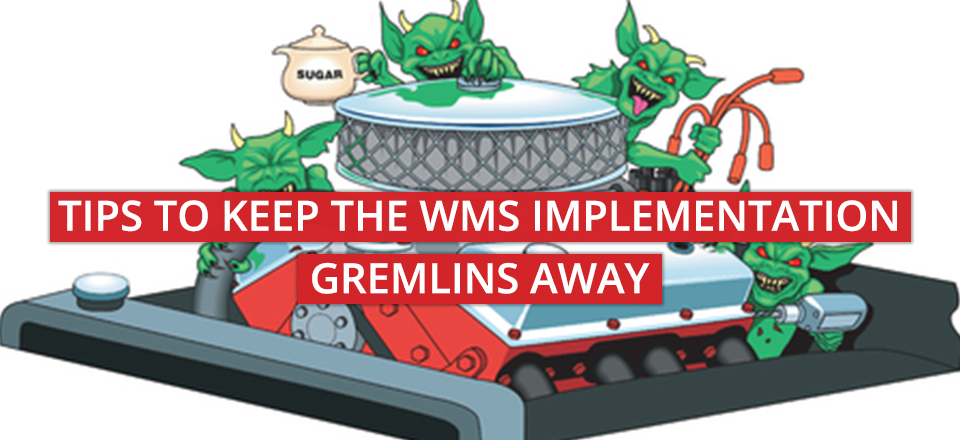The usual causes of mischievous and disruptive WMS implementation gremlins are poor product or vendor selection and improperly managed implementation projects. Of course, few WMS implementation projects are without some teething issues, but with the right approach, you should be able to keep these to a minimum.
How to Avoid an Implementation Horror Story
Assuming you have chosen the right WMS system for your warehouses or distribution centers, it would be a shame to let a poorly organized project devalue what is likely to be a significant investment. To help you prevent that from happening, keep the following five brief, but practical tips in mind for a successful and relatively gremlin-free WMS implementation:
1. The Software is not the System
A WMS is a complete system, and the software you use to manage your warehouse is only one component of that system.
What many companies forget is that a system is nothing without people. Even a fully automated warehouse requires human assistance to keep the hardware and software running correctly.
Involve your warehouse personnel fully in your WMS implementation. Your workforce is a critical system component too. If you neglect to ensure seamless and intuitive interaction between your people and the solution software, you will have a WMS that’s broken from the outset.
2. Don’t Forget About the Facility
Another component of the WMS that companies often overlook, despite its size and importance, is the warehouse itself. It’s common for a WMS implementation to require changes to warehouse layout, and indeed, without the effort to optimise put-away, picking, and dispatch flows for your new software, you could find implementing the system more arduous than you expected.
3. Your Vendor Does Not Have All the Answers
Try to be as detailed as possible in defining your company’s design needs. Sure, your vendors can design your solution with minimal input from those inside your organization, but leaving them to do so will lead to many missed opportunities for the software to support operational improvements.
4. Manage Expectation and Trepidation
Be diligent in communication and change management. Your WMS implementation will generate concerns among employees, managers and even the executive team. By communicating regularly and effectively and encouraging input from all stakeholders, you can minimize the concerns and reduce the natural resistance to change that can otherwise scupper your project.
5. You Can Never Do Too Much Testing
If you want to be sure your software will not let you down at go-live, you need to perform rigorous testing during the design and build phases of a WMS implementation. Companies often underestimate just how many test scenarios are required to shake a new solution down properly.
For a new WMS in a sizeable warehousing operation, a thousand test scripts would be reasonable to expect, and perhaps considerably more.
It is not sufficient to test a new solution under normal operating conditions only. Of course, you should test all standard functions, but you also need scripts to test how the system reacts to exceptions and user errors.
6. Don’t Skimp on User Training
Each employee who will perform activities in your warehouse or interact with the WMS should receive training appropriate for the tasks she will perform—without exception. A good approach, especially if your warehouse operation is large or you have multiple distribution centres in your enterprise, is to train workers at three distinct levels.
At the highest level, you should have between three and six superusers. These should be managers or staff carefully selected to receive extensive training in every area of the WMS.
In addition to full user training, you might also train your superusers to perform troubleshooting and maintenance tasks, which could involve accessing databases and other areas of the system not open to general users.
At the next level, you should have subject matter experts or troubleshooters. These employees should be specialists in a particular aspect of warehouse operations and will receive in-depth training in the relevant system functions. Finally, at the third level, will be the general users.
Enjoy a Nightmare-free WMS Implementation
Implementing a WMS is seldom simple, and hard work is undoubtedly the order of the day. However, when you prioritise the preparation of your warehouse facilities and workforce as well as your software, your operation will be well-positioned to keep the WMS implementation gremlins at bay—through go-live and beyond.
Editor’s Note: This post was originally published in August 2015 under the title “5 Tips to Keep the WMS Implementation Gremlins Away”. It has since been revamped, updated, and extended to include a new section, hence the change of title.







